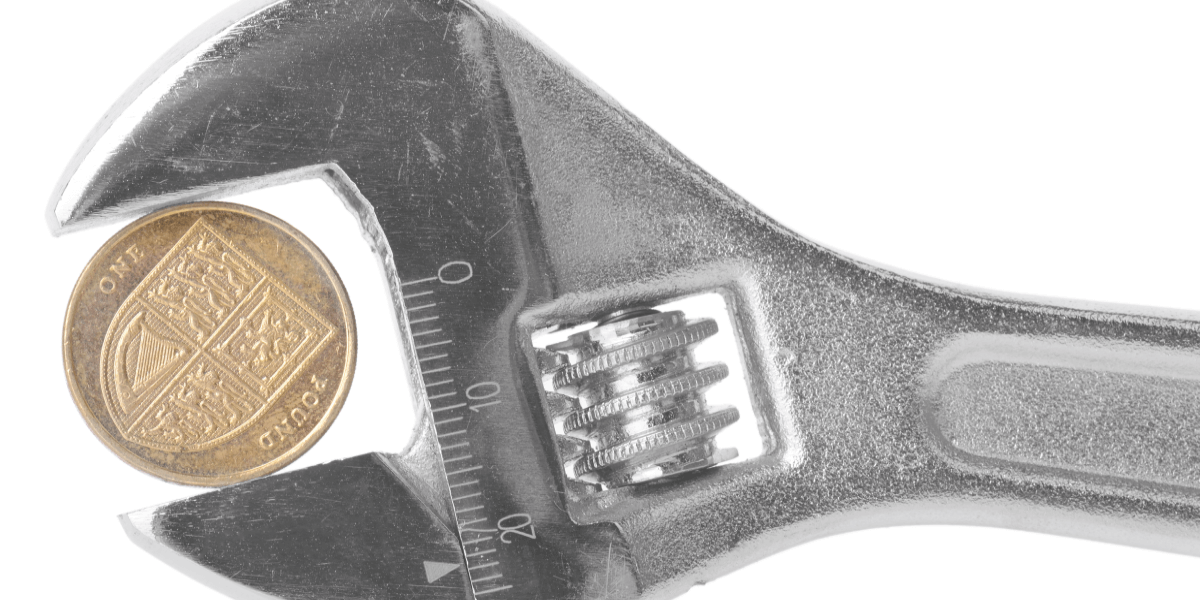Pressure on the FM budget is increasing and businesses want more productive teams offering greater value for money in everything they do. Here are 5 different ways you may be wasting money in your current maintenance management regime and how you could up your game.
1. Control waste in your preventative maintenance programme
The logic of planned preventative maintenance is well understood. Ensuring equipment is regularly checked and serviced prevents unexpected failure, business downtime and lost revenue.
But if you never review the success of your programme or attempt to optimise the way it works, it can simply become a ritual rather than a system that is actually effective.
In fact, research points out that between 40% – 60% of the tasks in a preventive maintenance programme are currently not adding value to a business because:
- The tasks are done too frequently or not enough
- Tasks are duplicated or poorly defined (leading them to be ineffective)
- Results are not analysed for effectiveness
Tightening up your approach to PPM could help you scale down and make your efforts much more targeted and effective.
Crucially, businesses who need to cut down on wasted time and money in PPM need the data to see exactly where their preventative maintenance programme is working and where it isn’t.
2. Reduce wasted time through risk based maintenance
The more adept your business gets at capturing and analysing data, the more you’ll be able to drill down and focus your maintenance efforts in areas that will deliver the most return on investment.
As Pareto’s Law states - 80% of consequences stem from around 20% of causes.
In other words the majority of seriously disruptive equipment failures will be associated with a relatively small number of assets.
Risk based maintenance, therefore, concentrates on finding the ‘vital few’ - those assets that are causing the most issues for your business in terms of time and money - and focusing on them.
The probability and the commercial/operational consequences of failure are all taken into account before the assets to concentrate on are selected - and a strategy to address their specific needs is worked out.
Risk based maintenance is a good approach for companies
- With limited maintenance resources
- A small amount of very high use machinery
- Companies with high value machinery
It focuses on making the best use of available engineers and gaining maximum return on the investment of your maintenance time.
3. Reduce waste through better root cause analysis?
If Pareto analysis is showing you that particular equipment is failing excessively and requiring constant and costly emergency corrective action, then you could profit from performing detailed root cause analysis, too.
Too often, the causes of frequent failure are not investigated effectively in a business, meaning they go uncorrected or, worse, equipment is replaced unnecessarily at massive expense to the company.
Root cause analysis looks beyond the symptoms of an issue, the final straw that is causing a piece of equipment to fail. Instead, it is intended to identify process and system issues so you can apply a permanent fix that will increase the reliability and lifespan of an asset. The approach looks at the possible reasons for failure in a holistic way. It includes:
- Technical issues affecting physical parts
- Human causes, when particular individuals do not perform a task correctly
- System causes, or lapses in processes that lead to failure
There are many formal techniques for RCA, but they are all driven by the quality of data you are collecting as engineers and contractors are called out to deliver emergency repairs. If you have complete records of each breakdown including time spent on a fix, the engineer in attendance and details of what they actually did, then you can begin to dig deep into the reasons for persistent failure.
With the right data and detail to hand to understand and correct the patterns of recurring, and expensive failure you can significantly reduce your corrective maintenance costs going forward.
4. Can you increase your productivity?
In your maintenance teams you waste time and money through waiting. Your team can seem like they’re always waiting for parts, instructions, access to buildings, authorisations and the rest.
Then there’s the wasted time of traveling between sites in haphazard ways, visits spread over days where time required has been underestimated, or engineers have had to return with parts to complete a job.
Making the most of your engineers’ time requires having the help desk and workflow tools to share information and communicate in real time.
- Capture and share photos and videos of the problem prior to attendance
- Attend with the right tools/parts
- Asset code such as Serial Number / QR Code / Barcode etc for clear identification
- Asset details to support the diagnosis or preparation of the visit e.g. model, manufacturer, service history etc
- Have tasks allocated based on engineer location and timetable
- Clients can get text or email notifications around engineer visits so they can prepare
- Engineers can be nudged to record details of visits (timings, fixes etc)
Increasing the speed and flow of information between departments will increase the speed and quality of fixes implemented. Improved communication and tracking of engineer time and activity will lead to leaps in productivity that can be sustained and then improved over time.
5. Can you optimise engineer/contractor performance to reduce waste
Working to reduce waste isn’t just the job of the FM team. It should be a two way street of collaboration with engineers and third party suppliers.
If you need to find long term and sustainable ways to save money worth spending time working with your engineers and contractors to develop and refine the most cost effective approach to their maintenance routines.
With the right data available and shared in tables and charts you can look together at areas where response times are failing, first time fixes are falling and where you could work together to eliminate waste.
This data can direct you to issues with workflows and processes that can be changed and adapted accordingly:
- Are there too many steps in your workflow process?
- Can it be simplified to improve your speed and efficiency?
- Is there too much emphasis on data collection that wastes engineers time?
- Where can we negotiate better deals or adjust KPIs to concentrate on waste reduction
Find the tools to help you focus
All these moves to improve efficiency and eliminate wasteful practices need to be driven by data. Data will help you:
- See the potential scale of waste in identified areas
- Analyse the reasons for the problem
- Suggest solutions
- Track the effect on KPIs when a specific change has been made
Centralised tools like a CAFM system can help capture the data, change your process, define new maintenance schedules and improve communications. Where financial data is available they can help you tackle waste systematically and put a tangible figure on the savings you could make.
.png?width=680&height=700&name=Ai%20page%20module%20(2).png)




